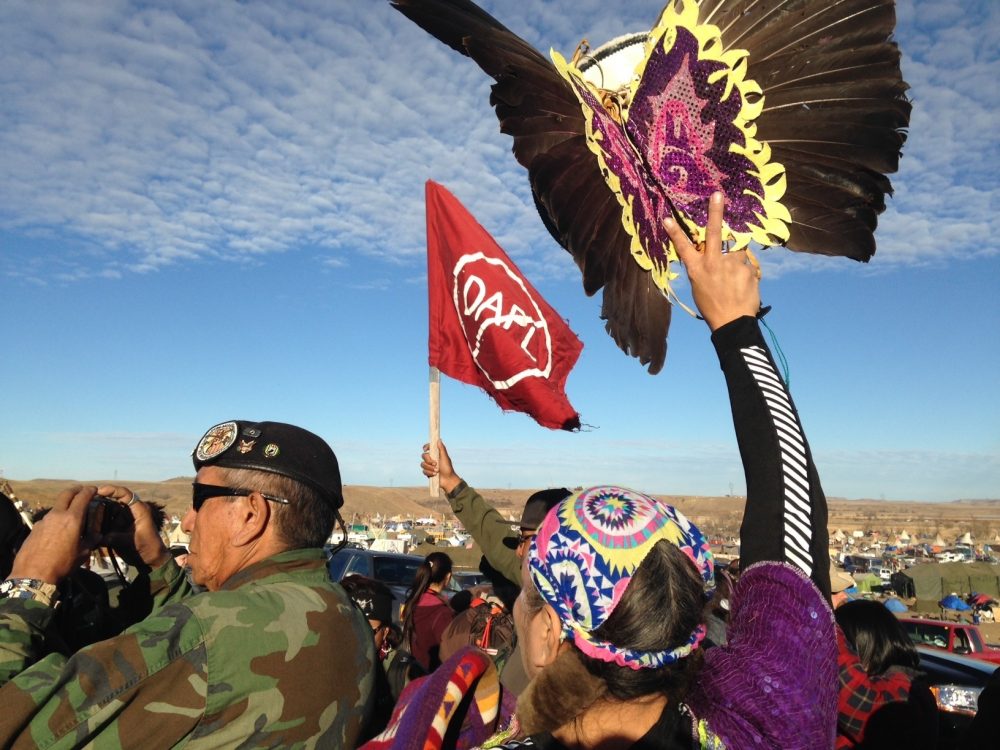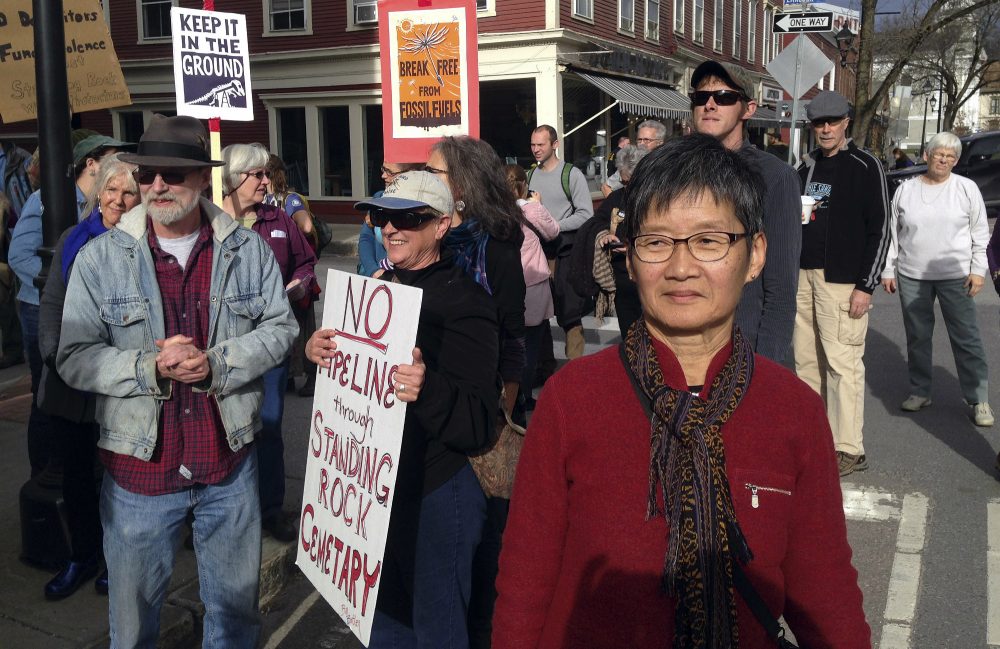Advertisement
A Model Of Resistance: The Broad Coalition Against The Dakota Access Pipeline

COMMENTARY
Not all the protest marches in Boston last week were related to the election. One group of several hundred marchers carried banners and signs through city streets to protest a pipeline.
That pipeline isn’t in Boston, or even in Massachusetts, but in North Dakota. The planned route of the Dakota Access Pipeline passes south of Bismarck and skirts the Standing Rock Sioux Reservation, home of the Lakota and Dakota nations. Carrying crude oil from the Bakken Shale field, it would tunnel under Lake Oahe, the vast reservoir behind the Oahe Dam on the Missouri River.
The broad coalition of causes represented at Standing Rock weaves a strong fabric of resistance. They’ll need that strength in view of the election of Donald Trump...
Because the people on the reservation rely on the Missouri for their drinking water, they regard the pipeline as a grave threat. Earlier this year, they established a camp in the path of the construction, resulting in dozens of arrests and violent confrontations with riot police.
The people of Standing Rock are suffering an environmental injustice. A telling fact is that planners originally proposed to have the pipeline cross the Missouri River upstream of Bismarck. That route was rejected, in part because of the risk that the pipeline would pose to the water supply of largely white Bismarck. There is a history of crude oil pipeline ruptures, some with calamitous effects. The revised route put the river crossing downstream of the city just a half mile above the reservation. At the crossing point, the pipeline would traverse land the Sioux regard as sacred, land that they contend was granted to them by an 1851 treaty and later taken back illegally.
In the political sphere, the Sioux of Standing Rock find themselves at the intersection of multiple distinct identities. They are simultaneously an indigenous people, people of color, rural dwellers, a colonized nation, a religious people and poor. As a result, their cause has drawn support from numerous and diverse groups around the world.
Advertisement
Members of at least 200 native tribes have traveled to Standing Rock. The Black Lives Matter movement recognized the common grievances they share with Native Americans. Various clergy groups have volunteered their efforts and participated in demonstrations. At least one group of Palestinians offered solidarity as fellow victims of settler-colonialism. Veteran groups, anthropologists and a nurses union have all voiced support and sent representatives to Standing Rock. The list goes on.

Predictably, environmental groups and climate change activists have also been prominent in the protests, because any new infrastructure for crude oil further deepens the nation’s dependence on fossil fuels and delays the transition to carbon-free energy sources that don’t contribute to global warming. Climate change activists oppose fossil-fuel pipelines as part of a broader long-term strategy to reduce carbon emissions and hasten the crucial shift to renewable fuels.
The climate change folks forthrightly acknowledge that fossil fuels are not the main story here. The native people are primarily concerned with their water and their sovereignty as an indigenous nation. They want the pipeline relocated, whereas climate activists don’t want it to be built, period. But subtle points of disagreement don’t prevent groups like Greenpeace and 350.org from lending a hand. They’re willing to subordinate their cause in the knowledge that joining a network of mutual assistance best serves all the participants in the long run. The broad coalition of causes represented at Standing Rock weaves a strong fabric of resistance.
...everything is connected -- minimum wage, racial justice, climate change, women’s rights, LGBT rights, free speech -- these groups will need to stand together.
They’ll need that strength in view of the election of Donald Trump, who counts oil executives among his closest advisers and has promised to invest heavily in infrastructure projects. Furthermore, Trump holds a personal financial interest in the pipeline, and the CEO of the company building the pipeline was a major donor to Trump’s campaign. The president-elect will not hesitate to ensure the completion of the Dakota Access Pipeline.
So, people are marching in Boston against a pipeline in North Dakota. In these times, social justice groups need to seek out linkages between their respective missions, even if those linkages are tenuous, and even if it means other causes may momentarily overshadow their own.
In this model, everything is connected — minimum wage, racial justice, climate change, women’s rights, LGBT rights, free speech — these groups will need to stand together. The movement to help the people of Standing Rock, even if ultimately unsuccessful, offers a glimpse of how this can work.
